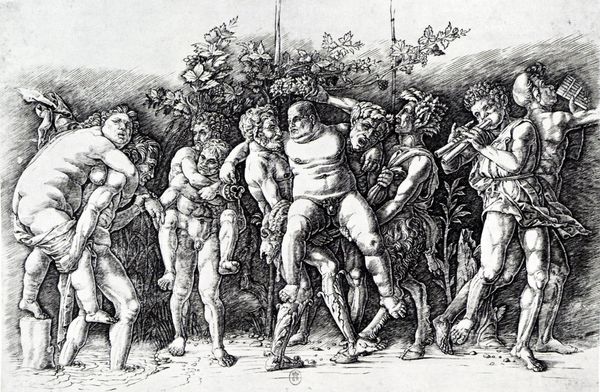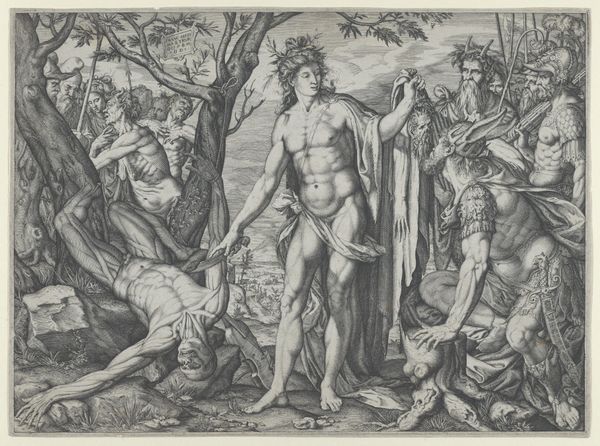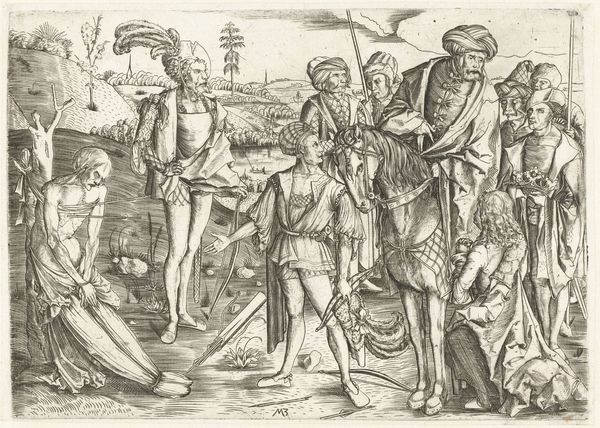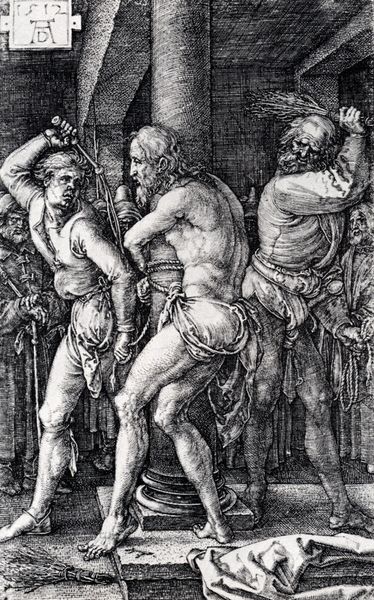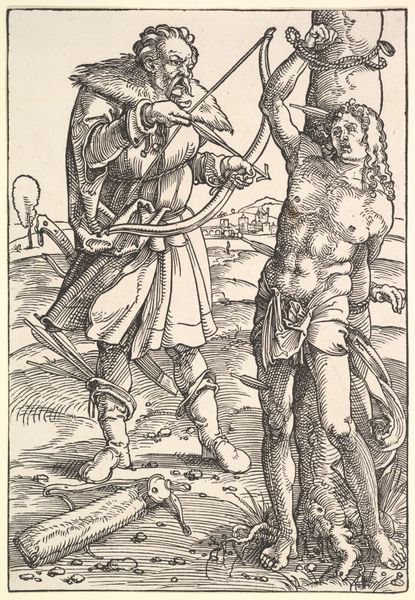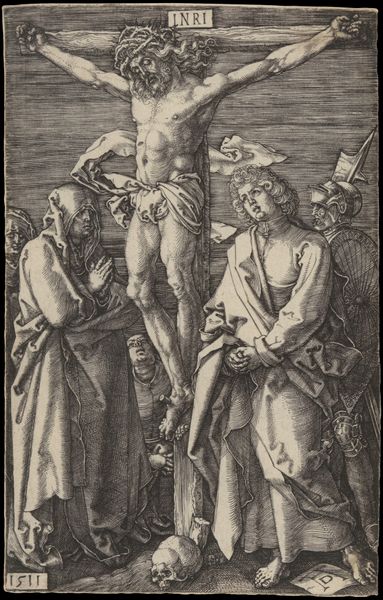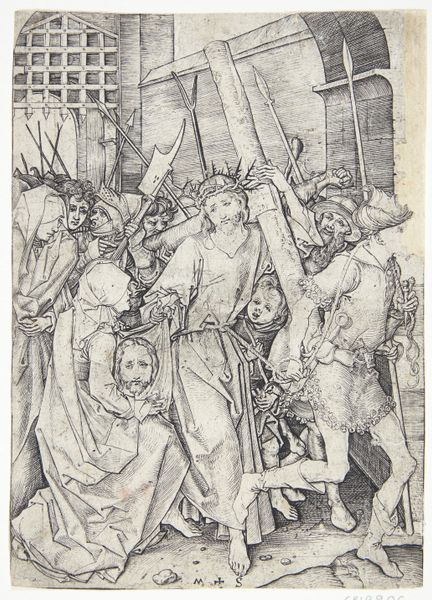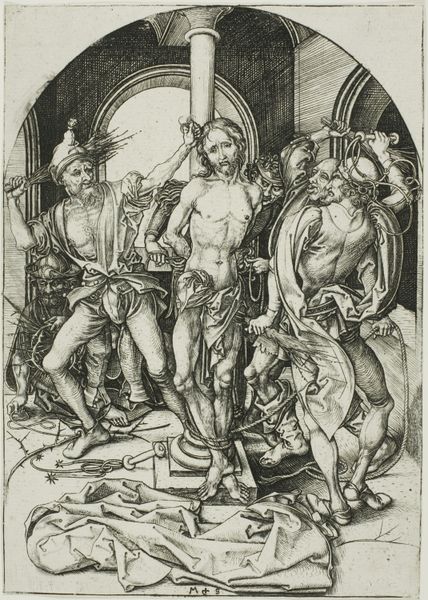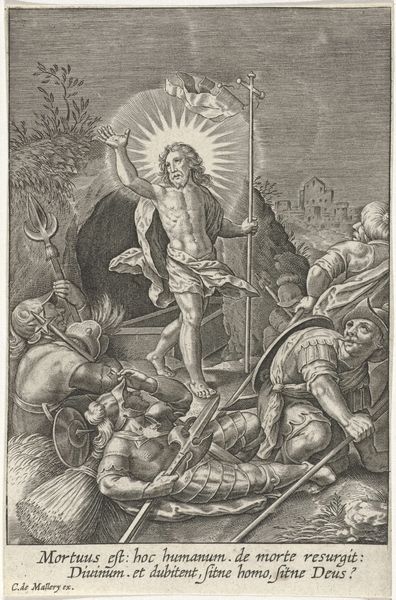
panel, oil-paint
#
portrait
#
high-renaissance
#
panel
#
oil-paint
#
figuration
#
oil painting
#
christianity
#
history-painting
#
italian-renaissance
#
realism
Dimensions: 78.7 x 121.4 cm
Copyright: Public domain
Curator: Standing before us is Hans Baldung's "Altarpiece with The Martyrdom of St. Sebastian," created around 1507. It's an oil-on-panel work currently housed in the Germanisches Nationalmuseum in Nuremberg. Editor: Well, the first thing that strikes me is the dramatic contrast between the placid landscape backdrop and the rather brutal scene playing out in the foreground. It creates a really unsettling tension. Curator: Indeed. Notice how Baldung utilizes a vertical composition, emphasizing the stark lines of the trees and the upright figure of Sebastian, drawing our eye upwards. The meticulous rendering of the archers, however, provides horizontal thrust that mirrors the physical drama. Editor: I'm intrigued by the placement of Sebastian at the foot of a dead tree. Isn’t that a fairly common Christian symbol relating to rebirth, specifically a symbolic link between death and resurrection? Is Baldung drawing on this connection? Curator: Precisely. The symbolic language in Baldung's work, specifically this one, is complex and deeply embedded in the socio-cultural contexts of the early 16th century. The arrows, of course, are tools of torture, and they can also serve as symbols of divine retribution. Editor: And yet, Sebastian is strikingly undaunted. There's an element of stoicism that undercuts the visceral horror of the martyrdom. But there is the almost unbearable visual discord that, for me, lies with the contrast between Sebastian's facial expression and that of his persecutors, several of whom have expressions suggesting uncertainty, maybe even concern? Curator: I would further argue that Baldung carefully manipulates the light and shadow to intensify this reading. The ethereal luminescence illuminating Sebastian and the shaded faces of the men emphasize their emotional interiority. Consider too the texture; Baldung meticulously builds it to create spatial dimensions on what, is, ultimately, a flat plane. Editor: Looking at it through this lens gives new resonance to the historical and symbolic gravity of this work, as the use of familiar, archetypal images serves to transcend time. The altarpiece reminds us, finally, that faith has had a powerful place in both the creation and understanding of visual narratives throughout history. Curator: Absolutely. And perhaps Baldung is pointing to the way that structure informs meaning, as it serves here to direct viewers in their personal contemplation.
Comments
No comments
Be the first to comment and join the conversation on the ultimate creative platform.
